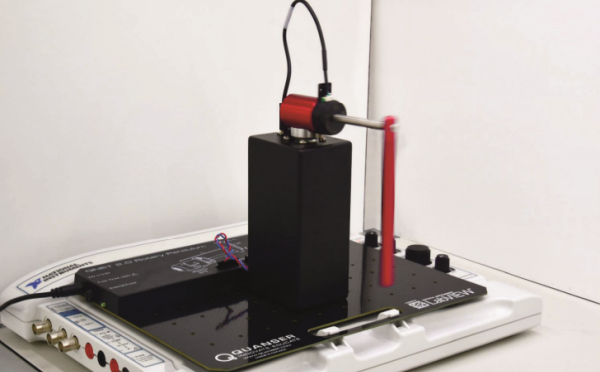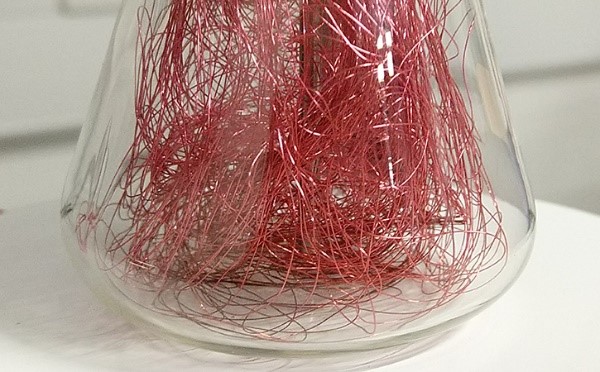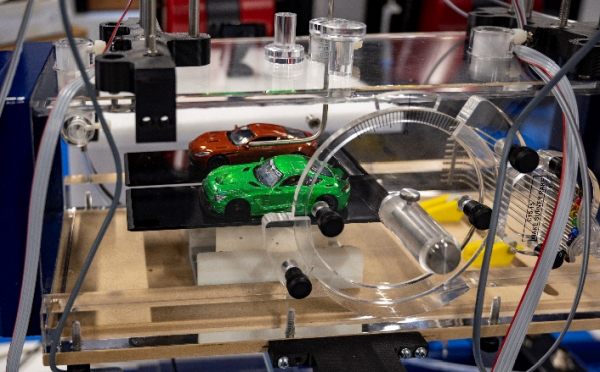The OpenEngineering Laboratory
The OpenEngineering Laboratory (OEL) offers practical laboratory-based teaching at a distance covering, electronics, signal-processing, control, materials and mechanical engineering. The OEL allows our engineering students to remotely connect to instrumentation, data, and equipment to undertake experiments and investigations. There are more than 30 activities serving over 6,000 students per year. Students can access the OEL from wherever they have an internet connection and at a time of their choosing.
Key features include:
- Equipment accessed in real-time
- Ultra-low latency connection for instantaneous experience
- Video, sound and data streaming from test-grade engineering rigs
- Capacity for over 300 experiment kits available simultaneously
- Available to students 22 hours per day
Example activities:

Pendulum
Investigate the dynamic behaviour of a driven pendulum to observe the relationship between its frequency, amplitude and phase.

Resistivity
Monitor the electrical resistance of a copper wire through heating and cooling cycles to investigate the effect of joule heating on the efficiency of power transmission.

Wind tunnels
Students explore aspects of fluid flow by remotely operating a wind tunnel.
the OpenEngineering Lab is a fantastic way to add the additional dimension of 'hand-on' to the module. With distance learning it is notoriously difficult to supply students with hardware kits – the OEL is a great solution. I have found the experiments illuminating and interesting – they have added to my understanding of the excellent course material. It also offers a safe environment. It has allowed me to continue with the module even though I am on holiday in Barbados – truly offering a global reach. Great stuff!”
Electronics Student
It is refreshing and exciting to be able to undertake a laboratory based experiment. It has really helped to put what I have been reading about into a practical exercise.
Mechanical engineering student
For more details about Open University courses in Engineering see here.
Meet our Academics

In addition to teaching on Open University modules our academics are engaged in ground breaking research that benefits individuals and society.
Request your prospectus
Explore our qualifications and courses by requesting one of our prospectuses today.
Request prospectusAre you already an OU student?
Upcoming Events
STEM Freshers': OpenTalk- Visions Matter
Thursday, September 18, 2025 - 19:00 to 20:00
Online & Berrill Lecture Theatre, Walton Hall
STEM Freshers': Welcome to the School of Environment, Earth and Ecosystems Sciences
Wednesday, October 1, 2025 - 19:00 to 20:00
Teams Webinar